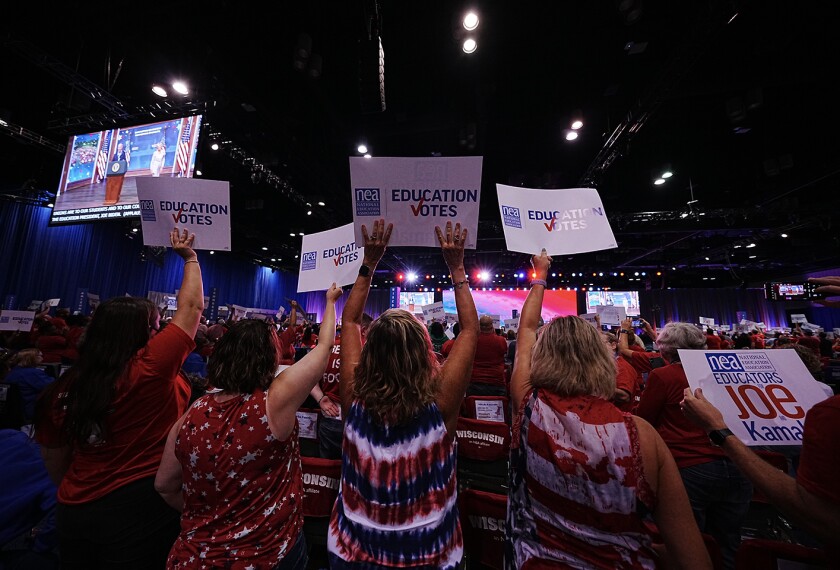Most students returned to in-person instruction this school year, but for many it was not the smooth reopening that parents, policymakers, and practitioners wanted. Disruptions due to COVID-19 outbreaks and quarantines among students and teachers have been a recurring feature of the school year. The pandemic has also elevated the importance of a key position in keeping schools open and helping them operate smoothly: substitute teachers.
Even in normal times, good substitutes can be hard to come by and the pandemic has shined a bright light on the fragility of the substitute teacher labor market. School systems have had to scramble to find enough substitutes, and some days they have not, forcing closures, shifts to remote learning, or instances of students sitting in the cafeteria staring at their phones or reading books. In any of these cases, valuable instructional time has been lost.
Some states have gotten creative in addressing the problem. In New Mexico, school districts called in the National Guard to work as substitute teachers in an effort to keep classrooms open. Oklahoma and North Carolina are giving state employees paid time off to serve as subs, and schools in Kansas temporarily removed the college coursework requirements for substitutes, making it possible for anyone with a high school diploma to apply to sub.
But we believe there is a more sensible and longer-term solution for some part of the shortage—allowing student teachers to serve as substitutes.
Student teaching, which puts an aspiring educator in the classroom to gain experience under the guidance of a mentor teacher, is included in nearly every one of the nation’s educator-preparation programs. Allowing student teachers to serve as substitutes would provide them with additional classroom experience (as well as some income).
Students are also more likely to be effective fill-ins for regular classroom teachers than outside substitutes. Before and during the pandemic, it has been all too common for class periods staffed by subpar substitutes to feature barely relevant movies or busy work. Aspiring educators have more skin in the game. They are more likely to be familiar with the school’s curriculum and may already know some of the students. Having them serve as subs could turn idle time into learning time.
Schools can figure out the optimal ways to use student teachers, too. For instance, a student teacher’s mentor might substitute for another teacher in the building while the student teacher stays in the classroom they already know. On days student teachers have off from clinical experience and class, they are among the best possible substitutes for their mentor teacher.
Student teachers are more likely to be effective fill-ins for regular classroom teachers than outside substitutes.
However, the seemingly straightforward solution of allowing student teachers to substitute is not so simple. As the one of us who just completed student teaching learned, bureaucracies—state, local, and teacher-preparation-program—can get in the way. Sydney was offered a position substituting for a fellow math teacher in her placement school when that teacher had to be out unexpectedly because of COVID-19. Yet Sydney had to forego the work since as a teaching intern, she was eligible to substitute only for her mentor teacher, according to her preparation program.
Some states, such as Washington, require substitute teaching credentials that take time and money to obtain. Teacher candidates must apply to be a substitute for a district, even when they may already be serving in it as a student teacher. And they must pay a fee for the required credential. This could be a barrier for teacher candidates, as many are unpaid and unable to hold down a second job because of the demands of schooling and student teaching.
Further, as in Sydney’s case, many educator-preparation programs do not allow their students to be substitutes for teachers other than their mentor teachers. And even that comes with restrictions about when and how often subbing can occur. In other states, like Kansas, student teachers are not allowed to act as substitutes in any capacity.
These bureaucratic hurdles do not exist everywhere. In a move that now looks prescient, the state of Louisiana granted student teachers the needed credential to be a substitute as part of its 2016 “Believe and Prepare” education reform. A main point of the new regulations is that students completing educator-preparation coursework are then placed in a required, yearlong teacher residency under an “expert mentor.” As a part of this residency, student teachers in Louisiana must obtain a resident teacher certificate, starting with a two-page application with no fee. Once granted the certificate, they can simultaneously serve as a substitute teacher for up to 10 days per semester, hours that still count toward their residency requirement.
New evidence is showing the valuable role student teaching can play in the development of preservice teaching skills, and as such, it should be protected. But our proposal is not at odds with this idea: Student teachers might gain different but no less worthwhile experience without their mentors in the room. It is also quite likely that students in the classroom would be better served by an adult who plans to make teaching a profession than someone who is substituting exclusively as a temp job.
It’s not clear how long the pandemic will be with us, but even once the rampage of COVID-19 becomes a memory, the challenges schools face in finding substitute teachers—especially good ones—will continue. Making it easier for student teachers to serve as substitutes could be one solution that benefits everyone involved.






